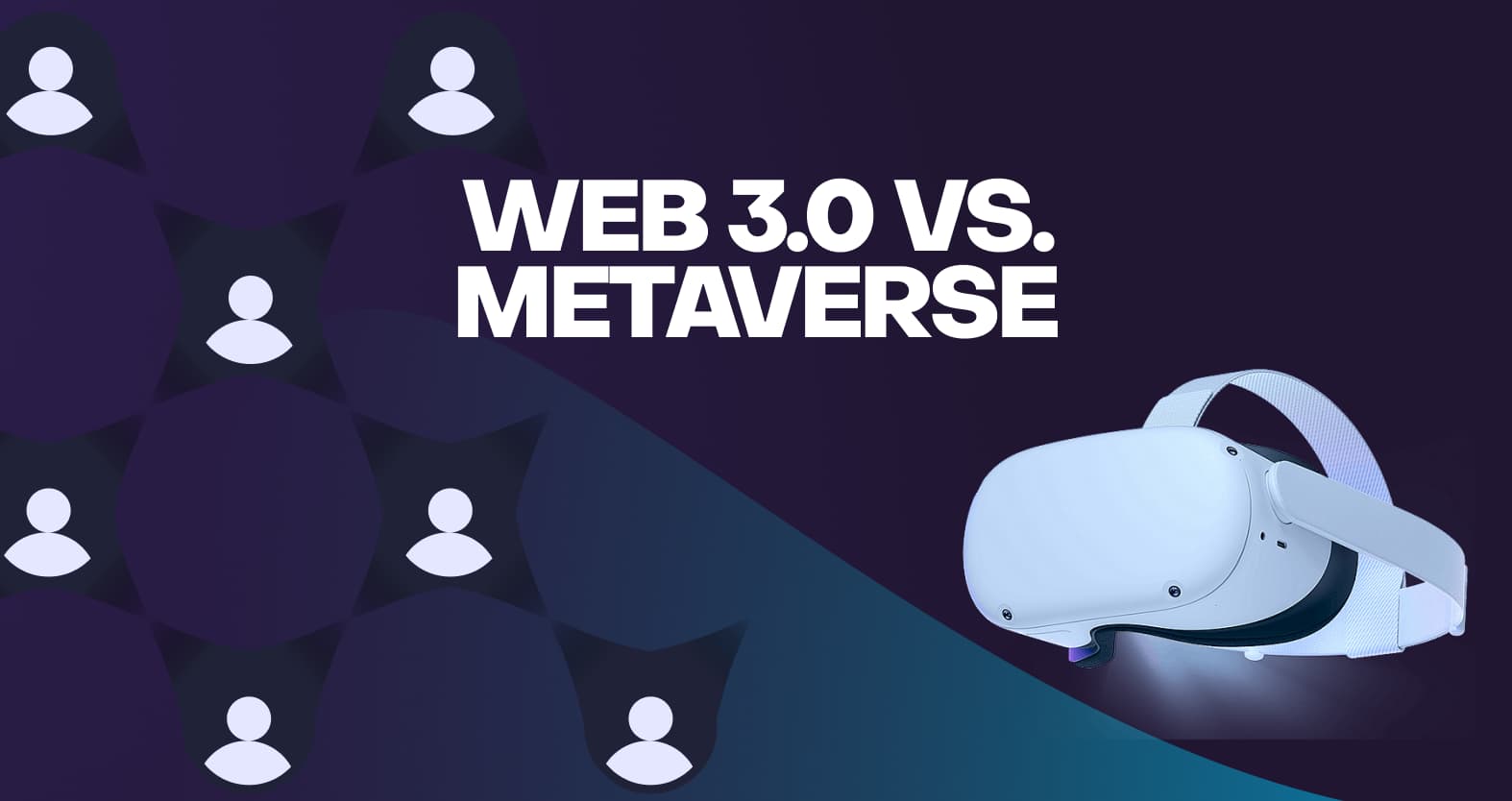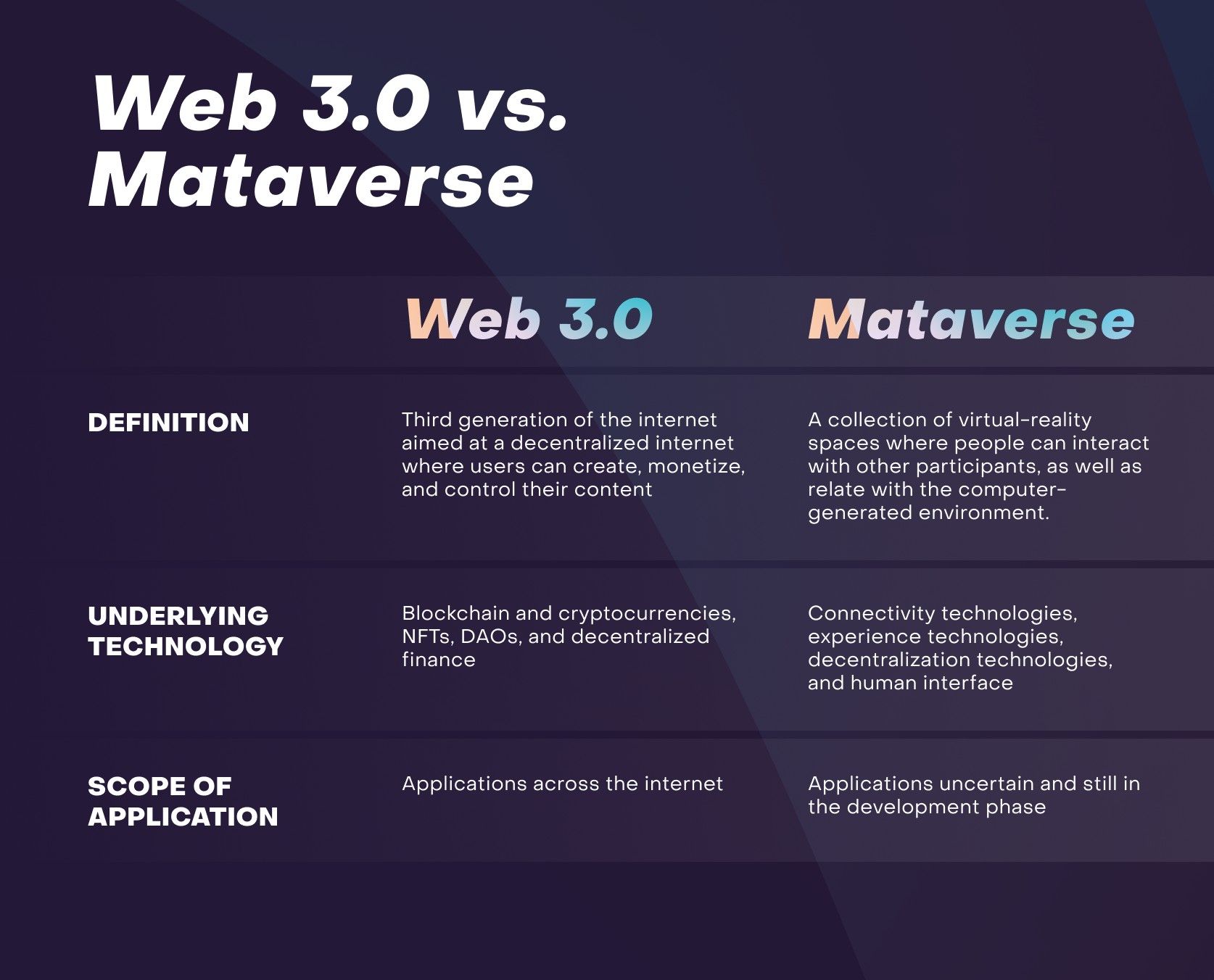
Table of contents
The internet has come a long way from its early days and is now very different from the slow text-based version used years ago.
Technological advancements have brought radical improvements to internet security and usability, offering users a more immersive experience and better interaction with people across borders. The internet’s continuous evolution has ushered in Web3 (also written as "Web 3.0") and the metaverse, both of which have gained increased traction in recent years. Although both are still in their early stages, these concepts have significantly changed how communication happens over the internet.
The History of the Internet
Some knowledge of the internet’s evolution is essential to understanding the changes Web 3.0 and metaverse concepts bring to web functionality and general communication. In the early 90s, English computer scientist Tim Berners Lee introduced the first version of the internet or Web 1.0, also known as the Classic Web. During this phase, the internet focused primarily on sharing messages through HTML documents via web browsers.
The second generation (Web 2.0) evolved the internet from basic, static web pages to more dynamic pages with user-generated content. It also supported the growth of social media and e-commerce. Web 2.0 has successfully introduced read/write functionalities on the internet and established the foundation for online economies.
Many features of the third generation of the internet are currently available across several industries, including finance, entertainment, and sports. However, Web 3.0 is still a long way from mainstream adoption.
What is Web 3.0?
There is currently no consensus definition of Web 3.0. Nonetheless, Web 3.0 describes the third generation of internet technology that enables more sophisticated and advanced interaction between devices and users. Web 3.0 is the internet phase that supports blockchain technology, incorporating other concepts such as decentralization and token-based economics.
Web3 enables the exchange of value and information between two sides of an individual or corporate divide without the need for explicit trust or intermediaries. Since there is no required trust or permission, the shift to Web 3.0 will enable a new wave of previously unimaginable and cost-effective business models from global corporations to decentralized autonomous organizations (DAO) and self-sovereign applications.
What Are the Key Characteristics of Web3?
The following are a few major Web3 characteristics:
- Decentralization — Web 3.0 uses decentralized blockchain networks to store all data, so no single system has exclusive access or acts as a single point of failure. Employing distributed ledger technology democratizes access and reduces the chance of failure from one point.
- Permissionless — Web 3.0 does not require users to disclose personal information or sign up (in the traditional sense) before accessing any services. This model provides increased security of data and sensitive information since users can choose to share data only as necessary.
- Security — Decentralization makes Web 3.0 inherently more secure than Web 2.0. Since Web 3 data is distributed, a network breach is considerably more difficult.
Web 3.0 and NFTs
NFTs (Non-Fungible Tokens) have become one of the most popular applications of the Web 3.0 structure thus far. These assets may represent digital art collections or collectible goods immune to duplication or forgery. Artists and content creators use NFTs to uniquely monetize and distribute their digital works on well-known marketplaces like OpenSea.
Apart from art, NFTs and the blockchain-based Web 3.0 have applications in several sectors, including:
- Real estate
- Gaming
- Identity verification
- Supply chain
- Ticketing
What Is the Metaverse?
While Web 3.0 focuses mainly on who owns and controls the internet of tomorrow, the metaverse revolves around how users experience the internet. The metaverse is a collection of virtual-reality spaces where users can interact with computer-generated environments and other users. The concept comprises independent virtual economies enabled by digital currencies and NFTs.
Users in the metaverse can interact with each other in a seemingly endless number of ways. Applications cover a broad range of uses, including education, where people can enter an immersive classroom to interact with teachers and other students. Metaverse application also extends to businesses interested in using virtual marketplaces for real-time transactions powered by cryptocurrencies.
The Metaverse and Cryptocurrencies
Since the metaverse is a virtual space with virtual economies, transactions require assets like cryptocurrencies and NFTs. These assets are essential to the metaverse, and are essentially prerequisites for many activities carried out virtually.
Metaverse platforms can also offer their own native tokens — metaverse tokens — for secure transactions. Each metaverse may have a utility token and a governance token or feature a token that merges both functions. Some common metaverses and their native tokens include Decentraland (MANA) and Sandbox (SAND).
Web 3.0 and the Metaverse Connection
The Web3 and metaverse concepts both operate on openness and decentralization. These platforms herald an internet iteration without gatekeepers or centralized systems. Instead, they both follow decentralized governance models powered by a community of nodes.
Web3 and the metaverse also provide censorship-resistant access to users looking to exchange value and information. However, they both have a few distinctions regarding their scope of application and underlying technology.
- Underlying Technology — The metaverse uses multiple technology variants, including virtual reality and augmented reality, to enable the entire ecosystem. Developing a metaverse involves connectivity, experience, decentralization, and human interface requirements. On the other hand, the main focus of Web 3.0 is a decentralized web that relies only on cryptocurrencies and blockchains.
- Scope of Application — The potential applications of Web 3.0 and the metaverse is another factor that differentiates both. At the moment, the metaverse is an emerging concept that provides for many sectors, including entertainment, social interactions, gaming, and education. Since this concept is new, development in these applications might take a long time, making it difficult to assume that metaverses would mirror most real-world activities.
Assuming widespread adoption is easier with Web 3.0 since it is a standard for the new internet era, Web 3.0 will have applications usable anywhere on the internet instead of being restricted to specific applications. The distinctions between Web 3.0 and the metaverse can be summarized as follows:
Web 3.0 Vs. Metaverse

The Web3 and metaverse technologies support each other perfectly and are somewhat interdependent. While the metaverse is a digital space, Web 3.0 focuses on a decentralized web that serves as the basis for connectivity within the metaverse. Although still in their early stages, both concepts are already becoming popular and showing increasing promise.
Try the AtomicDEX Non-Custodial Wallet
Whether you're interested in the metaverse or applications in the broader Web3 space, AtomicDEX is a great place to find the most popular coins and tokens.
AtomicDEX is a wallet and a decentralized exchange for BTC, ETH and ERC-20 tokens, AVAX, MATIC, and thousands of assets across dozens of blockchains.




